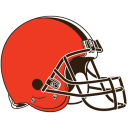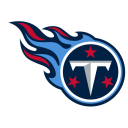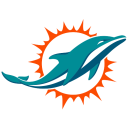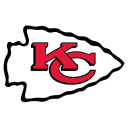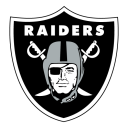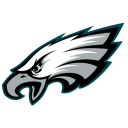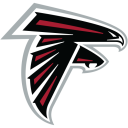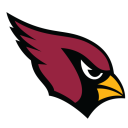The NFL’s new kickoff format has encouraging early returns
The NFL’s new kickoff format was designed with two objectives. The architects of the revamped alignment intend for it to increase the sagging number of returns, while aiming for a reduced injury rate more in line with that of a play from the line of scrimmage.
It amounts to perhaps a last, best attempt to keep the kickoff in the sport, rather than have it be eliminated because of its danger or irrelevance. Two-thirds of the way through the NFL preseason, signs are encouraging that the new setup might be able to fulfill its dual mandate.
About 78 percent of kickoffs have been returned leaguewide through two weeks of the three-week preseason, plus the opening Hall of Fame Game. That’s after only 22 percent of kickoffs were returned during the 2023 regular season, and after none of the 13 kickoffs in February’s Super Bowl between the Kansas City Chiefs and San Francisco 49ers were returned.
“It’s just exciting,” Atlanta Falcons Coach Raheem Morris said after his team’s second preseason game Saturday in Baltimore. “To get the play back in the game was the number one goal. We did that. Now we’ve got to figure out some of the schematic things that’s going to happen once the season starts, some of the twists, some of those things.”
NFL leaders caution that the return rate generally is higher during the preseason. Even last year, about 63 percent of preseason kickoffs were returned. League officials nonetheless are encouraged.
“We’ve seen a lot more kicks returned,” said Jeff Miller, the NFL’s executive vice president of communications, public affairs and policy. “We’ve seen some more dynamic kicks, meaning big plays. And we’ve seen a greater distribution on where the drives are starting.”
The average starting point for a team’s drive after receiving a kickoff this preseason has been the 28.3-yard line. That’s a 4.4-yard improvement on last year at this point. Eleven kickoffs have been returned beyond the receiving team’s 40-yard line this preseason, nearly double the amount from the analogous point last year.
The NFL has not yet received injury data for the preseason. Allen Sills, the league’s chief medical officer, said it’s far too early to reach any conclusions, but that he has seen nothing alarming to this point associated with the new kickoff.
“Obviously, sample size really matters,” Sills said in a video news conference this week. “So we’ve got to get some experience with this to be able to talk, really, about injury rates and compare sort of apples to apples. I will say nothing has jumped out so far. There haven’t been any unusual findings in the first two weeks in terms of injury rates or types of injury. But obviously that’s something that we’ll continue to track closely.”
According to league health and safety officials, the injury rate on the traditional kickoff format in recent years was about twice that of plays from the line of scrimmage; the concussion rate on kickoffs was up to four times that of plays from scrimmage.
Last season’s low return rate came with a rule in effect that allowed the receiving team to make a fair catch of any kickoff inside the 25-yard line for what amounted to a touchback, with the ball being spotted at the 25. That rule was intended as a temporary measure to limit injuries by encouraging touchbacks and suppressing the return rate.
The new kickoff format was designed by the NFL’s rulemaking competition committee with input from special teams coaches. The team owners ratified the new rules in March on a one-year basis.
The new format borrows heavily from the XFL kickoff and attempts to reduce the number of high-speed collisions on the play by having the two teams start close to one another. The kicker lines up in his traditional spot, but the 10 other players on the kicking team begin on the other side of the field, only five yards from the nearest blockers on the receiving team. Those players can’t move until the ball is touched by a returner or hits the ground.
The ball is spotted at the 30-yard line on a touchback on a kick into the end zone. The designers of the new format project a regular season return rate of 55 to 60 percent. That projection would have been 85 to 90 percent, the architects of the format have said, if the rule had called for the ball to be spotted at the 35-yard line for a touchback as originally planned, creating a greater disincentive for the kicking team to send the ball into the end zone.
The spot of the touchback could be tweaked in the future. Dawn Aponte, the NFL’s chief football administrative officer, said this week that the touchback spot is “not likely” to be moved to the 35-yard line before the regular season.
“It is a one-year rule change,” Aponte said. “So we anticipate to evaluate this throughout this season. … With respect to teams kicking it through the end zone, [there’s] still a lot to be seen as we head into the regular season and teams … show what they’re planning to do in regular season games versus what we’re seeing in preseason.”
The rules already have been modified to allow a 12th player to be on the field for the kicking team to hold the ball for the kicker if it blows off the tee multiple times in windy conditions; that player would have to leave the field immediately without participating in the remainder of the play. Aponte said the league will “see if there’s anything else that comes out … that requires further adjustment” before the season, then will hope to avoid in-season modifications.
“I think our objective is always to have the rule in place as we head into the season,” Aponte said. “[But] I never say never. There’s people above my pay grade that get to decide that. … We will continue to evaluate it throughout the season. And anything that needs clarification, I think, will come out as need be.”
Even the NFL’s branding of the new kickoff is evolving. The league called it the “hybrid” kickoff initially but now refers to it as the “dynamic” kickoff. Meanwhile, teams and coaches continue to work their way through the particulars of the new format.
The Kansas City Chiefs, in one preseason moment of confusion, surrendered a safety on a kickoff return. The ball landed in the end zone but bounced back into the field of play, and returner Mecole Hardman grabbed it and brought it back into the end zone while kneeling. Under previous rules, the receiving team could be awarded a touchback without having to field a kick that landed in the end zone.
The Atlanta Falcons opted against an onside kick attempt even in the final moments of a one-point defeat Saturday. A team must declare its intention to try an onside kick while trailing late in a game, at which point the alignment would revert to the traditional setup.
“You can kick the onside kick at the end,” Morris said. “But I don’t think that’s worth here it in the preseason, not getting their guys hurt and our guys hurt.”
Teams may be holding back some of their better kickoff ideas, keeping things basic and bland during the preseason to avoid tipping their hands to regular season opponents.
“It looks a little vanilla right now,” Morris said Saturday. “It’s just one of those things that’s just exciting. It’s the unknown for everybody. … That’s the topic of conversation across the league, across the media, across everybody. So we’ll really get a real tell on it, what it looks like, once the season kicks off in September.”
Related Content
Some Jewish voters are glad Josh Shapiro wasn’t picked for VP

 Yahoo Sport
Yahoo Sport 






